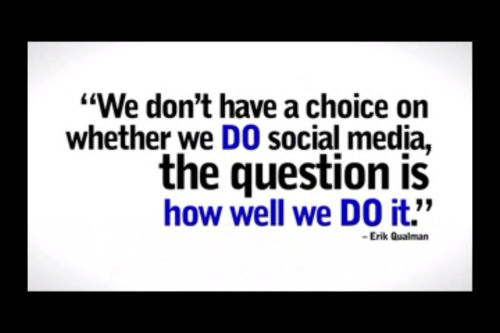 |
| Image courtesy of techline info |
Rural Canada and rural Manitoba are experiencing an ever increasing Internet speed gap. Over the last ten years, broadband speeds have been increasing around the world with the leading countries increasing from 1.5 Mbps to over 50 Mbps.
According
to netindex.com, the average bandwidth
speed globally is 9.9 Mbps. As a previous
post indicated, Canada and Manitoba’s average speeds are slightly
faster than the global average at 12.3 Mbps and 11.3 Mbps respectively. Most of
the communities in Manitoba under 5,000 people are averaging under 5 Mbps and
most out-of-town households average less than that. The target Internet speed
still being used as standard for rural Manitoba and Canada is 1.5 Mbps. This
standard for access was set 10 years ago in Canada and neither Canada nor Manitoba
has revised this standard or put forward a new broadband plan.
While 10
years ago, 1.5 Mbps was considered leading edge Internet access, times
have changed and now, Internet speeds of 1.5 Mbps are 10x slower than the
Canadian average and 20-50x slower than what is available to many in Canada and
Manitoba. While residents in cities have access to 25 and even 50 Mbps
broadband, many rural residents are lucky to have access to 5 Mbps and for many
out-of-town residents, it can be a struggle to even achieve the 1.5 Mbps
broadband minimum.
Does speed matter - Is 1.5 Mbps fast enough?
Maybe the
difference is not important. If rural Manitoba's de facto standard is 1.5 Mbps,
an important question for rural residents and community decision-makers and
developers alike is: “Is this fast enough? Or, to phrase
it another way, “Is the speed of our rural
Internet sufficient?”
A 1.5
Mbps connection speed does meet minimum/recommended standards for many popular
Internet activities, including voice and video calling on Skype, streaming
audio and streaming video, accessing youtube and other social media sites.
However, due to the fact that 1.5 Mbps is the minimum for many of these
applications and that users very rarely achieve their advertised speeds, the
quality of the experience and the content may be impacted, often requiring
minutes to view a 30 second youtube clip or repeatedly experiencing lagging/dropped
Internet calls.
As this
table from broadband.co.uk
illustrates, while 1.5Mbps meets the minimum requirements for many web
applications, the quality of that experience and those applications will be
substantially improved with faster speeds:
Internet Connection Speed
|
Time to load a typical web page*
|
Time to download a typical 5-minute
song**
|
Streaming Video Quality
|
56K dial-up modem
|
14 sec
|
12 min 30 sec
|
|
256K broadband
|
3 sec
|
3 min
|
Low Quality
|
512K broadband
|
1.6 sec
|
1 min 30 sec
|
|
1Mb broadband
|
0.8 sec
|
41 sec
|
|
2Mb broadband
|
0.4 sec
|
20 sec
|
Medium Quality
|
4Mb broadband
|
0.1 sec
|
5 sec
|
|
6Mb broadband
|
Instantaneous
|
3.5 sec
|
|
8Mb broadband
|
Instantaneous
|
2.5 sec
|
TV Quality
|
Note: all figures are approximate and
represent best-case download speeds. Actually speeds will generally be lower.
* Assumes a typical web page is 100 kilobytes of data. ** Assuming a typical song is a 5 megabyte MP3 file. |
|||
Needs to be faster
While 1.5
Mbps does allow for access to the majority of the Internet and Internet
activities there are Internet applications and uses that are clearly beyond the
capacity of 1.5 Mbps broadband. Streaming HD video for example requires 6-8
Mbps and for group video calling on Skype 2Mbps is the recommended connection. Unfortunately
for rural residents, these are the types of applications and Internet use that
are increasing in popularity and importance in areas such as online education,
health and business activities.
Rural
Manitoba clearly needs, and would benefit from, faster Internet access. While
rural users with a 1.5 Mbps connection are currently able to use many of the
same Internet applications that their faster counter parts are, they do so with
a noticeable reduction in quality. In addition, more advanced and bandwidth
heavy applications are simply beyond the limits of their access.
While 1.5
Mbps may meet the absolute minimum Internet requirements, this will not be the
case for long. Increasingly rich media content on websites means that the
Internet connection speed requirements are going to keep increasing and 1.5
Mbps will soon be insufficient for many activities it currently allows. Reflecting
ever-expanding Internet and bandwidth requirements, the FCC in the United
States has recently raised the definition of minimum broadband from 1.5 to 4 Mbps.
Improvements underway in Manitoba
Luckily
for rural residents in this province, Manitoba is working hard to expand its
Internet availability and speed in rural areas. The rural-focused initiative Manitoba Netset is now to offering up to 7 Mbps connections in
many parts of the province and is continuing to expand in its efforts to serve
more rural Manitobans. Efforts such as this are a very important step in
improving rural Internet access, but efforts will need to continue. While Rural
Manitobans will definitely benefit from the doubling/tripling of their Internet
speed, the Canadian average will still be more than 2x faster and city
residents will still have access of speeds up to 10x faster than their rural
counterparts. More initiatives like Manitoba Netset will be needed for rural
residents to be able to keep pace with the changing Internet and to continue to
shrink the access gap for rural Manitobans.
Sources
